We are so lucky that neither of us “suffers” from seasickness. Having said that, both of us firmly believe that despite not being highly vulnerable EVERYONE gets seasick sometime. Sea conditions change continually, meaning the boat’s motion changes continually. Given that motion confuses your inner ear causing motion sickness, there is some type of boat motion or combination of factors that will cause anyone and everyone to be seasick.
David is susceptible to winds blowing diesel fumes over the port stern quarter into the cockpit – seasickness is not confined to only boat motion. If he has to go below to do anything with the diesel fumes and stern quarter motion, he turns GREEN instantly. Luckily I don’t react that violently, but large waves on either stern quarter rolling under the boat can make me feel queasy.

Both of us hate the side effects from the seasickness medication almost as much as seasickness — dry mouth, the horrid metal mouth taste, dizzyness, blurred vision and sleepiness. On the other hand, there are some instances when it’s worthwhile putting up with the side effects to get the relief from having to worry about getting seasick. The first time we sailed Winterlude up the Chesapeake – a 2 day trip with the boat’s prior owner, Boris, I dutifully put a scop patch behind my ear since I had no idea if I would or wouldn’t be susceptible to seasickness. Three quarters of a day into the trip, I peeled it off feeling almost instant relief from metal mouth and no nausea.
Similarly, before our first overnight, I put the scop patch on … and took it off before the first day was over and before our first major passage – from the Keys to Isla Mujeres, Mexico, repeated the process.
One major factor for both of us is that despite not suffering from motion sickness except under specific conditions, we can both feel queasy right after sunset on an overnight passage. Suddenly, the horizon which we’ve been gazing at, on purpose or not, all day long, disappears and our inner ears have no sense of spacial orientation, creating a hint of nausea. It’s times like this we’re super glad that we stash our favorite seasickness med – meclizine – in the upper left corner of the spice rack which is just inside the companionway – within easy reach without having to go below! We highly recommend keeping your favorite seasickness med within constant reach of the cockpit even if no one aboard ever gets seasick — because as noted in the first paragraph, both of us firmly believe that EVERYONE gets seasick, it’s just a matter of the right circumstances. You don’t want to be digging around for meds forward in the head the first time you experience the unpleasant sensation!
Other good advice includes eating small meals regularly to always have something in your stomach which seems to help prevent seasickness. And for pete’s sake — or your own — don’t get carried away drinking alcoholic substances the night before a sail or passage. You’ll regret it!
One note — one of the best and favorite seasickness medications for cruisers is Sturgeon, a medication that unfortunately US cruisers cannot obtain since it’s not approved for use in the US. If you’re elsewhere and have the opportunity to try it, use your own judgement. Personally, if I were prone to seasickness, I’d be using it in a heartbeat! But I’m not and I’ve never tried it, so I can’t really comment except to say that alot of cruisers flying other flags seem to like it alot. And something we’ve never had luck with are the wrist bands that some people swear by — I swear that these people just aren’t prone to seasickness anyway and think that their bands keep it at bay — who knows, try them if you want.
Here’s a list of the seasickness meds we carry aboard … and some of the favorites from other cruisers we know. Pick your favorite and make SURE it’s aboard and in easy reach from the cockpit at all times!
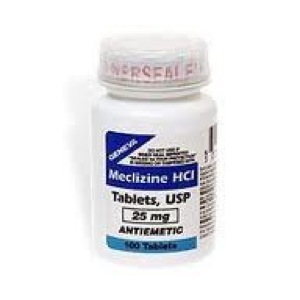
1. Meclizine 25 mg. We’ve had both 10 mg and 25 mg. If we have 10 mg, we take 2. The advantage to meclizine is it’s one of the few seasickness meds that you don’t have to take hours ahead of time … since neither of us is normally susceptible and we don’t enjoy the side effects, we’d rather not take meds until we’re feeling poorly. The downside to this approach is that we’ll have 20 minutes to a half hour before the meds kick in that we’ll be wishing we were anywhere but on this boat. The upside is that we don’t have to deal with the side effects until we’re sure we need to. Every pharmacist will tell you that the exact same ingredients are in Bonine, but for whatever reason – maybe it’s psychological, but it doesn’t matter to us — Bonine makes both of us overly sleepy where Meclizine does not. You won’t find Meclizine sitting out in the over the counter area, but if you ask at the pharmacy counter and explain it’s for seasickness you can get it … after the pharmacist tries to get you to buy Bonine. Just explain that you understand supposedly it’s the exact same, but you want Meclizine not Bonine. We’ve always been able to get it. A side benefit is that it’s usually less expensive than the over the counter remedies.
2. Scop Patches (Scopolamine) –– you need a doctor’s prescription for these magic little patches that look like little round bandaids that you put behind your ear. You’ll also need to apply the patch at least four hours before stepping onto the water, but it’s good for three days. Some people have stronger reactions to the scop patch – it’s a good idea to try one before you need it just to know how your body reacts. I can and have used them in the past with the only bad side effect being substantial dry metal mouth blah. We have them aboard out of habit I guess since no one ever uses them, but I’m reluctant to go to sea without them in the drawer in the head.

3. Ginger. I know it seems crazy, but ginger really does work. We usually have some fresh ginger so I can make ginger tea, ginger ale and also some ginger snaps because I’m a cookie monster and it’s easy to justify eating an entire box during a night watch. When we started cruising we also had a bottle of ginger pills and I think they did work. Ginger is the first “drug” of choice for me since I don’t turn green right away, unlike David. If it gets rid of the headache and settles my stomach, I don’t need anything else. If not, I go for the meclizine.
The one medication we don’t have aboard is bonine, but lots of people use it successfully, so I’ll include it here….
4. Bonine. This is most people’s choice and the only over the counter choice we’ve seen cruisers use with confidence. Over the counter, easy to obtain it has a supposedly non-drowsy formula. One of the keys to Bonine in our experience is not to wait until you step aboard to take the first tablet. The instructions aside, we’d recommend taking one the night before you depart aboard and one the next morning to give the medication a bit of time to get into your system. Otherwise, if you’re extremely susceptible to seasickness, you’ll be sick before it has time to take effect. Not the result you’re looking for!
Fair winds and following seas! Do you have other seasickness remedies aboard? Please leave a comment and share the information! Cheers! Jan
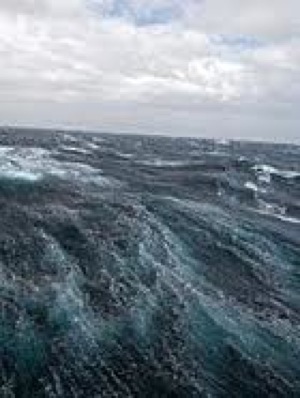

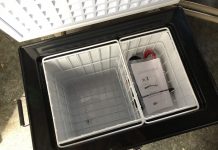
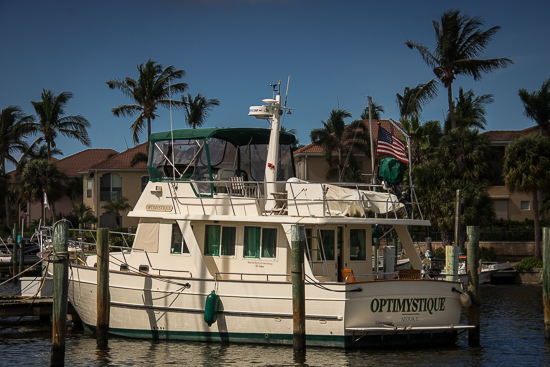







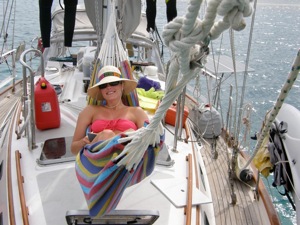
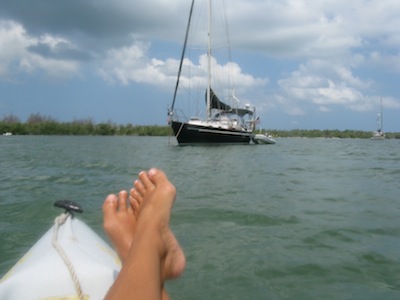
I’ve often heard that an eye patch works great especially for kids – Maybe it’s in their head but it really does seem to work. I’ve made a few out of scrap material I had and let the kids know if they feel sea sick these eye patches with surely cure it!!!
They wear them and not one throws up so must be something!!
Very interesting — I’ll file this away for when the grandkids are a bit older! 🙂 Have you tried it with adult pirates? Cheers! Jan
Hi, It’s Stugeron and available from Canada. 15/25/75 mg.
You were talking about a medication that really works. The name is STUGERON. Not sturgeon as in your article. It is easily available in Europe and has no unpleasant side-effects.
Thanks Rudy for the correct medication name! If we ever get to Europe or parts where it’s sold, we’ll stock some Stugeron aboard Winterlude! Cheers! Jan
What works very well for guests who complain too much is a really big syringe with an even bigger needle followed by the words, “I have practiced a few times with an orange so it shouldn’t hurt too much!”
Normally settles the grumbles of those just looking for attention.